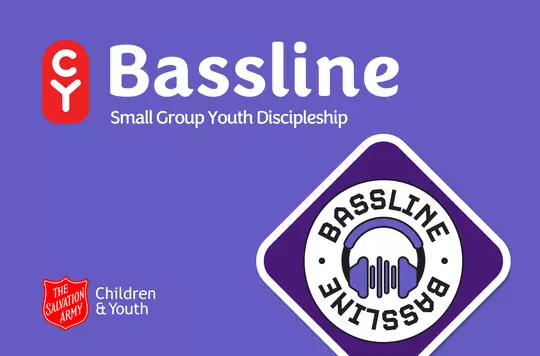I am the Resurrection and the Life
Youth Small Group Material
Session Overview
After Lazarus had been four days lying dead in a tomb, Mary and Martha had begun to accept they would never see their brother again. Then Jesus returned to Judea and brought Lazarus back to life. This supernatural event gave the disciples a glimpse of the possibility of resurrection and all that was to come in Jesus’ story. In today’s session we consider the words of Jesus from John 11:25 – ‘I am the resurrection and the life’ – and what they mean for each one of us this Easter.
Welcome
To start our session today, we’re going to see how much you can remember about the resurrection story of Jesus.
The group can either work individually or in teams to see how many questions they can get right. There are 10 questions in total with 15 seconds given to answer each one. When the quiz is completed, discuss with the group the answers they missed or got incorrect and clarify any misunderstandings.
Watch: Bible Trivia – The Resurrection of Jesus (4:41)
ADDITIONAL ACTIVITY
- What part of the resurrection story amazes you the most? Explain your answer.
Word
Jesus made seven ‘I am’ statements where he described different aspects of his character and nature.
- What are the ‘I am’ statements of Jesus? See how many you can remember.
- I am the bread of life. (John 6:35,48,51)
- I am the light of the world. (John 8:12, 9:5)
- I am the door of the sheep. (John 10:7,9)
- I am the good shepherd. (John 10:11,14)
- I am the resurrection and the life. (John 11:25)
- I am the way, the truth and the life. (John 14:6)
- I am the true vine (John 15:1)
Today we are going to focus on the statement ‘I am the resurrection and the life.’ Jesus said these words as part of a supernatural event that opened the eyes of the disciples to the possibility of his own death and resurrection. The story is found in John 11:1-44.
Watch: The Story of Lazarus – LUMO (7:00)
Ask the group to find John 11:1-44 in their Bibles and discuss the following questions. Encourage them to find scriptural support for their answers.
- How would you describe Jesus’ relationship with Mary, Martha and Lazarus?
- Why do you think Jesus deliberately delayed before responding to Mary and Martha’s request for help?
- Why did the disciples object to Jesus returning to Judea?
- How would you feel if you were Mary and Martha and Jesus finally turned up?
- Read John 11:21-25. How did Martha misunderstand Jesus?
- Read John 11:32-37. How did Jesus respond to Mary and Martha’s grief?
- Read John 11:38-44. Why do you think Jesus chose to raise Lazarus from the dead? How is this miracle linked to his statement, ‘I am the resurrection and the life’?
- Read John 11:45-50. What chain of events escalated as a result of the resurrection of Lazarus?
The Jewish leaders felt threatened by the actions of Jesus, and the remaining chapters of John’s Gospel lead us through to his death and resurrection. The resurrection of Lazarus gave the disciples a glimpse of what was to come, where they would see Jesus live out the words ‘I am the resurrection and the life’.
ADDITIONAL ACTIVITY
There are other instances in the Bible where Jesus brought people from death to life. Explore the following Scripture passages:
Matthew 9:23-25
Luke 7:11-17
- How do these events differ from the death and resurrection of Lazarus?
Witness
Leader’s notes: In the Witness section today the young people will have an opportunity to carefully consider what they, and The Salvation Army, believe about the death and resurrection of Jesus. Each member of the group will need to be able to see the ‘Salvation Through Jesus’ information below. The activity can be approached in several ways.
- Read through the text as a group and use this and the Scripture references as a discussion starter.
- Divide the young people into smaller groups and give each group a section to read. Ask them to explore the Bible verses and then feed back to the rest of the group.
- As above, but ask each group to create a pictorial representation of what they have discovered.
Whichever approach you take, spend time discussing the implications of the final paragraph and what it means for The Salvation Army today.
Extract from The Salvation Army Handbook of Doctrine
Salvation Through Jesus
Christianity is a historical faith. The New Testament, especially the four Gospels, tells the history of Jesus. The major creeds also provide an outline for his life. To tell the story of Jesus is to preach the gospel, for the Christian faith is based upon what actually happened in the life, death and resurrection of Jesus Christ.
The public ministry of Jesus followed his baptism in the River Jordan. Filled with the Holy Spirit, Jesus set out to teach and preach the good news of the Kingdom (Mark 1:14). He taught that the time had come for God’s reign to be established: his very coming had brought the Kingdom near. All people, especially the poor and the marginalised, were invited to share in the celebrations (Luke 4:16-21). With great authority, he called disciples to follow him (Mark 1:16-20; 2:13-17). He healed the sick and oppressed (Matthew 4:23-25; Mark 1:29-34). He challenged and defeated the power of evil as a sign of the coming Kingdom (Mark 1:21-28; Luke 11:14-23). But Jesus’ actions also challenged the religious authorities of his day, who sought to kill him (Mark 2:23-3:6). Jesus believed that his suffering and death were within the will and purposes of God and did not yield to the temptation to avoid their bitterness (Mark 14:32-42; John 12:27,28).
Thus, the death of Jesus was no accident or tragic mistake. Jesus did not give up his life as a victim suffering for a cause. He died on the Cross fully trusting that through his death, and by his obedience, the purposes of God would be fulfilled (Matthew 16:21-23; Mark 8:31-33; Luke 9:22). His arrest and trial by the religious authorities, the death sentence imposed by the Roman government, the terrible crucifixion he endured, his death and burial in a borrowed grave – these were not the meaningless events they appeared to be at the time to his followers (Matthew 26:47 to 27:56; Mark 14:43 to 15:41; Luke 22:47 to 23:49; John 18:1 to 19:37). Though they were due to the actions of sinful people, it became evident that God was at work through Jesus in all that happened, and the offering of his life was God’s gift to the world (John 10:17,18; 11:49-52; Acts 2:22,23; Romans 5:15-19).
The death of Jesus was not the end of the story. The whole New Testament resounds with the proclamation that God raised Jesus from the dead (Matthew 28:5,6; Mark 16:1-7; Luke 24:1-9; John 20:1-18; Acts 2:32; 1 Corinthians 15:3,4). The Resurrection of our Lord Jesus Christ in bodily form turned apparent failure into triumph and confirmed the power of self-giving love over evil and death. God’s transforming presence brought life out of death: Jesus is exalted as Lord and Christ (Acts 2:36).
The New Testament presents the Resurrection as the fulfilment of prophecy (Luke 24:46). The empty tomb and post-resurrection encounters with the believers give witness to its truth. In the Resurrection, the Kingdom of God burst through by the power of the Holy Spirit. It is also our assurance of life to come in all the fullness that God wills for us.
No satisfactory explanation of the birth of Christianity can be given without taking seriously the conviction born in the disciples that their Lord was risen from the dead. The existence of the Church, Christ’s living Body on earth, is evidence of his risen life.
The Salvation Army Handbook of Doctrine 2013, pp83-84.
ADDITIONAL ACTIVITY
If the young people would like to discover more about the importance of the resurrection of Jesus, then watch and discuss the clip together.
Watch: Why is the Resurrection of Jesus Christ important? What does Resurrection Mean? (6:04)
OR
Why Does Resurrection Matter? (NT Wright Q&A)
Worship
The Salvation Army Handbook of Doctrine says this:
‘The New Testament presents the Resurrection as the fulfilment of prophecy (Luke 24:46). The empty tomb and post-resurrection encounters with the believers give witness to its truth. In the Resurrection, the Kingdom of God burst through by the power of the Holy Spirit. It is also our assurance of life to come in all the fullness that God wills for us.’ (p84)
Through Jesus’ words – ‘I am the resurrection and the life’ – and lived experience through his death and resurrection, we are all able to enjoy fullness of life with Jesus.
To bring the session to a close, give the group an opportunity to share in sung worship. Song suggestions are listed below, but you may have members of the group that are able to lead this time of worship. Ask the group to reflect on the words of Jesus, ‘I am the resurrection and the life’, and what it means to them this Easter.
‘Thank You Jesus for the Blood’ – Charity Gayle (5:26)
https://www.youtube.com/watch?v=dhU-Omwg2rU
‘Resurrecting’ – Official Lyric Video – Elevation Worship
https://www.youtube.com/watch?v=aHGFNUlEZ8M
‘Risen’ – Easter At Saddleback (2021) (5:26)
https://www.youtube.com/watch?v=m5sBvDAnNW4
ADDITIONAL ACTIVITY
Bring the session to a close with the following prayer.
Lord Jesus Christ, I rejoice and rejoice continually in your glorious and triumphant victory over death. For your victory is my victory. Help me to live by it, in it, and for it. I am grateful to my depths – grateful forever.
Amen.
Selwyn Hughes
Explore Further

Youth small group material exploring what it means for Christians to be salt and light in the world

Compelling small group discipleship material for ages 12-25 (previously known as Youth Small Group).